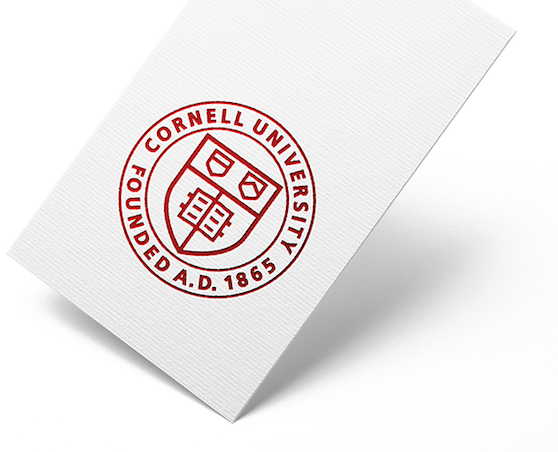In the ever-evolving landscape of the restaurant industry, establishing an effective distribution strategy has become paramount for businesses seeking to optimize their reach, enhance customer satisfaction, and drive profitability. This guide delves into the intricacies of distribution strategies, providing a comprehensive roadmap for restaurants to navigate the complexities of this crucial aspect of their operations.
Understanding Distribution Channels
Distribution channels serve as the arteries through which products flow from producers to consumers. In the context of the restaurant industry, these channels encompass the various methods by which food and beverages are delivered to customers. Traditional distribution channels include:
- Takeout: Customers place orders and pick up their food directly from the restaurant.
- Delivery: Restaurants partner with third-party delivery services or employ their own delivery staff to transport orders to customers’ locations.
- Catering: Restaurants provide food and beverage services for special events, such as weddings, corporate functions, and private parties.
Assessing Strategic Fit
Before implementing a distribution strategy, restaurants must carefully assess its strategic fit with their overall business objectives. Key considerations include:
- Target Customer Base: Identifying the specific customer segments that the distribution strategy aims to reach.
- Brand Value and Perception: Ensuring that the distribution strategy aligns with the restaurant’s brand image and customer expectations.
- Operational Capabilities: Evaluating the restaurant’s capacity to handle the additional workload and logistical requirements associated with the new distribution channel.
Evaluating Operational Opportunities and Costs
Expanding distribution channels can present both opportunities and costs for restaurants. Potential benefits include:
- Increased Sales: Reaching a wider customer base and generating additional revenue streams.
- Enhanced Customer Convenience: Providing customers with greater flexibility and ease of access to the restaurant’s offerings.
- Improved Efficiency: Streamlining order fulfillment processes and reducing labor costs associated with traditional dine-in service.
However, restaurants must also consider the potential costs associated with implementing a new distribution strategy, such as:
- Infrastructure Investments: Purchasing or leasing additional equipment, vehicles, and storage space.
- Labor Expenses: Hiring and training staff for delivery or catering operations.
- Marketing and Advertising: Promoting the new distribution channel and attracting customers.
Building Guest Loyalty
Loyal customers are the lifeblood of any successful restaurant. Distribution strategies can play a vital role in fostering customer loyalty by:
- Providing Convenience: Offering convenient and accessible dining options that cater to customers’ busy lifestyles.
- Enhancing Customer Service: Ensuring that the delivery or catering experience meets or exceeds customer expectations.
- Personalizing Interactions: Utilizing data and technology to tailor marketing and promotional efforts to individual customer preferences.
Key Considerations for an SEO-Friendly Distribution Strategy
In today’s digital age, an effective distribution strategy must incorporate search engine optimization (SEO) best practices to ensure that the restaurant’s online presence is optimized for visibility and accessibility. Key considerations include:
- Keyword Research: Identifying relevant keywords that potential customers are likely to use when searching for restaurants or specific food items.
- Content Optimization: Creating high-quality content, such as blog posts and landing pages, that incorporate target keywords and provides valuable information to customers.
- Local SEO: Optimizing the restaurant’s website and online listings for local search results, which are particularly important for driving foot traffic and takeout orders.
Developing an optimal distribution strategy is a multifaceted endeavor that requires careful planning, execution, and ongoing evaluation. By understanding the various distribution channels, assessing strategic fit, evaluating operational opportunities and costs, building guest loyalty, and incorporating SEO best practices, restaurants can establish a robust distribution network that drives growth, enhances customer satisfaction, and positions the business for long-term success.
Download a Brochure Not ready to enroll but want to learn more? Download the certificate brochure to review program details.

- Certificate in Restaurant Distribution Strategy from the Nolan School of Hotel Administration at Cornell University
- 40 Professional Development Hours (4 CEUs)
How It Works Course Length2 weeks Program duration2 months Class SizeUnder 35 students Effort3-5 hours per week Format100% online ModelInstructor-led Course Length2 weeks Program duration2 months Class SizeUnder 35 students Effort3-5 hours per week Format100% online ModelInstructor-led
- View slide #1
- View slide #2
- View slide #3
- View slide #4
- View slide #5
- View slide #6

At the Cornell Nolan School of Hotel Administration, Chris Anderson teaches. He taught at the Ivey School of Business in London, Ontario, Canada, before being appointed in 2006. Professor Anderson primarily studies service pricing and revenue management. He is actively involved in the application and development of revenue management in a wide range of industries, such as consumer packaged goods, financial services, hotels, airlines, rental car, and tour companies. Research by Professor Anderson has received funding from several governmental organizations as well as private companies. He is the regional editor for the International Journal of Revenue Management and a member of the editorial board of the Journal of Revenue and Pricing Management. Professor Anderson teaches courses in revenue management and service operations management at the Nolan School of Hotel Administration.

Food and beverage lecturer Lilly Jan teaches at Cornell’s School of Hotel Administration Having worked in restaurants, catering, events, retail, and television production, she brings nearly 15 years of experience in the hospitality and foodservice industries. Prior to joining Cornell, Dr. Jan served as Newbury College’s Director of Culinary Operations in Brookline, Massachusetts. She also created and instructed a variety of classes in culinary and hospitality management while working as an academic advisor and faculty member at Newbury College. Additionally, Dr. Jan has taught at Boston University and Le Cordon Bleu.
In addition to being a chef, product and recipe creator, and foodservice advisor, Dr. Jan has experience working with a range of food-related companies, such as retail food stores, food trucks, on-demand food delivery services, and food startups. Her area of expertise is operations management, with a particular emphasis on bringing food business ideas to market.
A regular lecturer and media liaison on Chinese cuisine, cooking, and food culture, Dr. Jan has been featured in print and radio outlets. She produced television shows for America’s Test Kitchen and frequently contributed to Boston Public Radio on WGBH.
Dr. Jan has two degrees in communications from Boston University (B Sc. ) and Gastronomy (MLA). She earned her Ph. D. from Iowa State University in hospitality management, emphasizing training in ethnic restaurants and knowledge of food allergies Dr. Jan’s areas of interest in research include food safety and allergies in restaurants, career advancement in the foodservice industry, workplace education and training, and culture and cuisine.
- Examine the latest developments in restaurant-customer interaction to see how they affect your company.
- Evaluate digital opportunities to drive high-yield, direct business
- Analyze distribution formats to determine which ones are most suitable for a given operation.
- Examine the costs and operational benefits of implementing a new distribution plan.

How to Market a Restaurant on Social Media
FAQ
What type of distribution do restaurants use?
What is the distribution process in the food industry?
What are the 3 distribution strategies with examples?
How do restaurant distribution channels work?
This often involves creating and experimenting with different distribution channels. The quality of your food has a major impact on whether customers will return to your restaurant. In the restaurant industry, distribution channels typically start with the food supplier. This is where you purchase your products and other supplies.
How do restaurants find food distribution channels?
Restaurants find food distribution channels through food suppliers, promotional ideas, advertising, and internet marketing techniques. When opening a food truck, opening a bakery, or another food establishment, your food distribution model should be created to increase customers.
What are food distribution channels?
Food distribution channels refer to both the middlemen that are involved in distributing food products from manufacturers to consumers, as well as from other wholesale restaurant supplies distributors.
How does a restaurant distribution model work?
If you’re opening or operating a restaurant, your distribution model should strive to increase visits to your establishment. Employing various marketing strategies helps you build and maintain a solid reputation in the community. This often involves creating and experimenting with different distribution channels.
